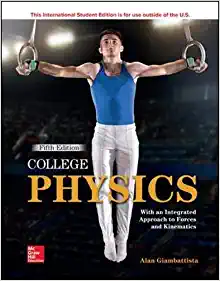Samantha goes kayaking on a straight river. After she has paddled upstream for a while, she realizes
Question:
Samantha goes kayaking on a straight river. After she has paddled upstream for a while, she realizes she dropped a lifejacket overboard when she launched so she turns around and paddles downstream to retrieve it. The lifejacket has been drifting along with the current the whole time, but eventually Samantha catches up to it. Assume the river current flows at a constant speed and that Samantha uses the same paddling effort upstream and downstream, so her speeds relative to the water are the same.
(a) Draw vectors to represent Samantha’s upstream displacement (from launch to turnaround) and her downstream displacement (from turnaround to lifejacket retrieval) in the reference frame of the riverbank. If the magnitudes are unequal, be sure to show which is larger.
(b) Now draw vectors representing Samantha’s total (upstream + downstream) displacement and the total displacement of the lifejacket, both in the reference frame of the riverbank.
(c) In the reference frame of the water, the lifejacket is at rest the whole time. What does that tell you about Samantha’s total displacement relative to the water? Sketch vector arrows showing her upstream and downstream displacements in the reference frame of the water.
(d) Does Samantha spend more time paddling upstream, more time paddling downstream, or the same time each way? Explain your reasoning.
Step by Step Answer:

College Physics With An Integrated Approach To Forces And Kinematics
ISBN: 978-1260547719
5th Edition
Authors: Alan Giambattista





